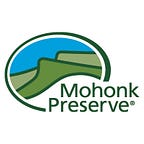Research Report #1— Keys to Taste and Morphology: Blueberries and Huckleberries of the Shawangunks
For many years scientists and naturalists have been studying and observing the flora and fauna of the Shawangunk Ridge. Foremost among them was Daniel Smiley, for whom Mohonk Preserve’s Daniel Smiley Research Center is named. Dan wrote numerous reports summarizing his observations on various topics. This regularly occurring series will feature some of these reports; some hold tremendous scientific value today and just await an interested researcher to follow up, others showcase a quirky sense of humor or highlight an oddity of nature.
Read the report: Keys to Taste and Morphology: Blueberries and Huckleberries of the Shawangunks. August 1980. Paul Huth and Dan Smiley
A note from Paul C. Huth, Director of Research Emeritus:
I started working on plant related research with The Mohonk Trust in 1974 as part of a Duck Pond Watershed Study. With a botany background, I volunteered to help Trust staff identify plants growing in the 300 acre watershed. Later, I assisted Daniel Smiley identify and organize some 2,500 mounted pressed plants in his herbarium at his home at the Elms Cottage at Mohonk. Our work together evolved into the floristics and vegetational history of the Shawangunks.
One of the plant groups we focused on, principally because of their dominance and economics, were the species of blueberries and huckleberries growing on the ridge. This group, of a dozen species and forms, also included two species of cranberries. While we had good records of most of the common blueberries, it took some creative field work to find and identify some of the less common species. Most previous records were related to picking and eating. From the 19th century to the mid 20th century, “huckleberries” were harvested each year on the ridge by local and transient pickers. In 1878, a report estimated a volume of some 10,000 bushels harvested from the Shawangunk ridge, shipped and sold!
Dan’s first record in the Daniel Smiley Research Center Species Card File, was from 20 June 1932-“Blueberries (lowbush)-3 found ripe and eaten (sweet) on rocks at Eagle Cliff Descent”. By the late 1950s, Dan, with Ulster County Botanist Henry Dunbar, was experimenting with taste related to different species in the area of the Ellenville Ice Caves.
Our field work starting in 1975 was first to scientifically identify what species we had here in the Shawangunks, including current Mohonk Preserve and Minnewaska State Park Preserve lands.
As we admitted then, “Tasting was a pleasant extra incidental to the collection and identification of specimens for the Trust herbarium….Our (taste) judgement was based on sampling of fruits that were neither just ripened or over ripe.” We felt the taste of different species was characteristic enough for each of us to correctly relate taste to an individual species.
For the resulting report we did annually consume many handfuls of blueberries and huckleberries. But, no one said science couldn’t be fun!
